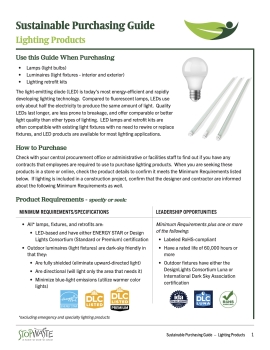Resource Library

No matter the type of printer you have, the cost of the toner over the life of the printer is likely to far exceed the upfront price of that printer. Yet, you can lower toner costs while still getting quality products and reducing associated environmental impacts by choosing remanufactured and/or high-yield toner cartridges.
Read More
Servers are the backbone of our networks and online applications. Data centers are also some of the most energy intensive buildings to operate, consuming 10 to 50 times the energy per floor space of a typical commercial office building. Data centers are also water intensive - among the top-ten water-consuming industrial or commercial industries in the U.S. While smart data center design is key to reducing impacts, the server equipment itself plays a significant role in reducing both energy and cooling loads within data centers.
Read More Read More
Read MorePrint services are often used for high-volume print jobs, mailers, and specialty printing. If your agency directly uses the resulting print job materials, the paper used for the print job must contain a minimum of 30% post-consumer recycled content to comply with California’s Senate Bill 1383, aka. SB 1383, which went into effect January 2022.
 Read More
Read MorePaper fiber is a common material for many office supplies - from sticky notes to storage boxes. Paper office supplies purchased directly by staff must contain a minimum of 30% post- consumer recycled content when equal in cost and function to comply with California’s Senate Bill 1383, aka SB 1383, which went into effect January 2022.

The light-emitting diode (LED) is today’s most energy-efficient and rapidly developing lighting technology. Compared to fluorescent lamps, LEDs use only about half the electricity to produce the same amount of light. Quality LEDs last longer, are less prone to breakage, and offer comparable or better light quality than other types of lighting.
Read More